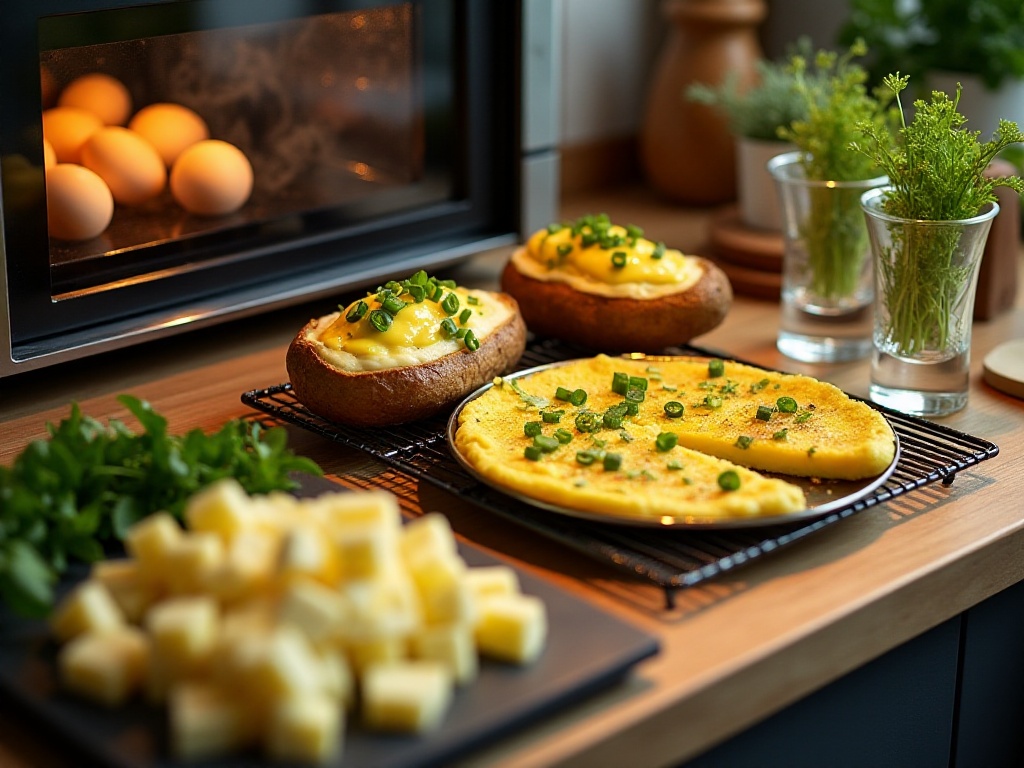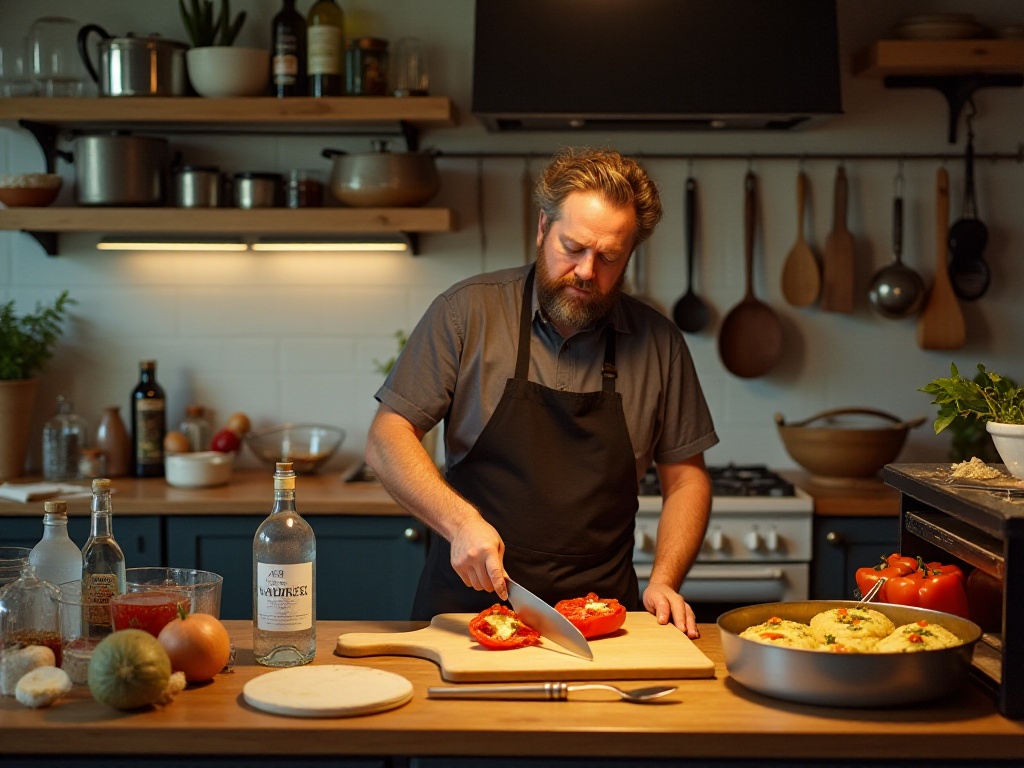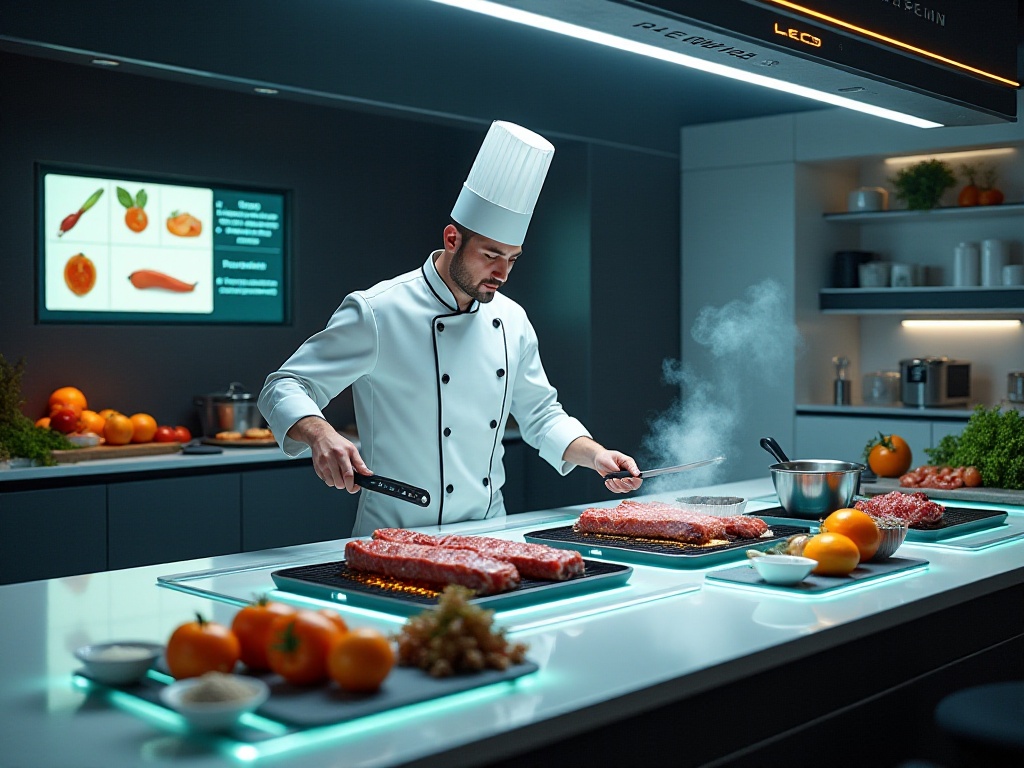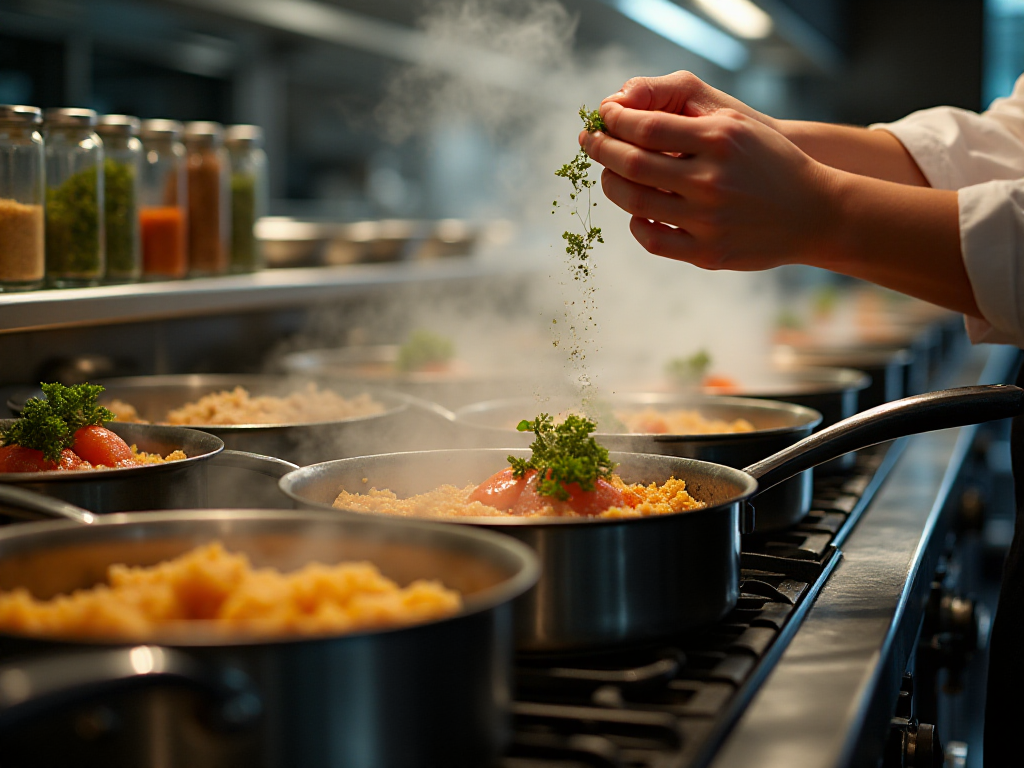Introduction
As a fresh graduate in the workforce, just thinking about what to eat for lunch every day can be overwhelming. Ordering takeout daily drains your wallet quickly and lacks proper nutrition. Cooking yourself seems particularly troublesome, especially when you're drowsy in the morning! However, I recently discovered a super practical meal prep method where you can easily prepare a week's worth of lunch boxes in just 60 minutes - it's literally saved my stomach and wallet! Today I'll share my experiences and guarantee that you too can become efficient in the kitchen!
Meal Prep Philosophy
Honestly, most of us young people basically live on takeout these days. Scrolling through delivery apps, looking at tempting food photos, then seeing comments like "portions too small," "not fresh," "disappointing" - it's so frustrating! When you think about it, we emphasize efficiency in our work, so why do we find cooking particularly troublesome?
Recently, I realized that cooking is actually similar to coding - it needs modular thinking. For example, we can treat food prep, cooking, and portioning as separate modules and combine them in the most optimal way. This immediately improves efficiency! Plus, cooking yourself not only saves money but more importantly gives you complete control over ingredient freshness and taste - you can make it light or heavy exactly how you want, without worrying about disappointment.
Initial Preparation
First, let's talk about equipment. As someone who rents, I deeply understand how precious kitchen space is. So my suggestion is, rather than buying lots of kitchen tools you might not use, keep it simple and buy a few truly practical items.
A rice cooker is absolutely essential! I recommend getting a 4L one, which can cook enough rice for a week at once. I previously bought a "budget version" that broke after two months, but later bit the bullet and bought a better one that's still going strong after more than a year.
A steamer is also important - preferably a two or three-tier stainless steel steamer. Why? Because you can steam several dishes at once! Imagine having juicy steamed chicken breast on the top layer and fragrant pumpkin on the bottom - isn't that a beautiful picture?
As for lunch boxes, I strongly recommend glass ones! Although they're slightly more expensive than regular lunch boxes, they're really worth it. First, they're microwave-safe, which is incredibly important for office workers. Second, they're transparent, which makes the food look appetizing, and you'll get envious looks from colleagues. Finally, they're very easy to clean and don't retain odors. I now have 7 of them, perfect for a week's use.
Shopping Strategy
Regarding grocery shopping, I used to be very indecisive. Buy too little and it's not enough, buy too much and it might go bad. Later, I figured out a "three-color principle": green vegetables should make up 40%, red and yellow vegetables 30%, and meat and staples 30%.
For green vegetables, I usually buy lettuce, choy sum, broccoli - nutritious and easy to prepare. For red and yellow vegetables, I choose carrots, pumpkin, bell peppers - not only nutritionally valuable but also make lunch boxes look particularly appealing. For meat, I most often buy chicken breast and pork tenderloin, which are affordable and easy to prepare.
There's also a shopping tip - check the supermarket's special offers. For example, at my regular supermarket, fresh vegetables are on sale Tuesdays and Fridays, and meat is on sale Thursdays. So I usually shop on these days - it's both fresh and economical.
Time Management
Honestly, at first I also thought it would be impossible to prepare a week's worth of lunch boxes in 60 minutes. But through practice, I found it really is possible! The key is good time management.
The first 15 minutes are the busiest - you need to prepare all ingredients. I usually wash the rice and put it in the rice cooker first, then prepare other ingredients while the rice cooks. Efficiency is important when cutting vegetables - for example, when slicing carrots, cut enough for two meals at once, half for stir-frying with meat strips, half for salad.
The second 15 minutes is the golden cooking time. By now the rice cooker is working, so I put vegetables that need steaming into the steamer. While steaming, I can start marinating meat. For example, slice chicken breast and marinate it with cooking wine, soy sauce, and minced garlic - this makes it especially flavorful when stir-fried.
The third 15 minutes is mainly for stir-frying. I suggest cooking vegetables first, as they can be slightly cooled without issue. After vegetables are done, use the same wok for meat, which can absorb the vegetable flavors.
The final 15 minutes is for portioning. This stage needs special attention as it affects food shelf life. I usually wait until food is slightly cooled before packing, but not too cool - keep it warm. Label each lunch box with dates to avoid confusion.
Practical Tips
Regarding specific operations, the most important thing is learning "one ingredient, multiple dishes." This technique not only improves efficiency but also gives your lunch boxes different flavors each day.
Take green peppers for example - after slicing, half can be stir-fried with meat strips for a super rice-friendly dish; the other half can be diced for a cold dish, crisp and refreshing. Similarly with broccoli, after blanching, half can be made into garlic broccoli, the other half drizzled with peanut sauce becomes a completely different dish.
You can also get creative with marinating meat. For instance, buy a pound of chicken breast, divide it into three portions - one marinated with soy sauce and minced garlic for teriyaki chicken, one with curry powder for curry chicken, and one with black pepper for black pepper chicken. This way, the same chicken breast tastes different every day.

Storage Tips
Many people worry about the freshness of pre-prepared meals, but there's no need to worry. I've been doing this for over a year, and there are no problems if you follow these points.
First, lunch boxes must have good sealing. My glass lunch boxes, though expensive, seal particularly well and prevent flavor mixing in the refrigerator. Second, pay attention to ingredient placement when packing - rice should be at the bottom, dishes on top, so even if there's liquid it won't make the rice too wet.
Temperature control is most important. Keep refrigerator temperature around 4 degrees Celsius, which keeps food fresh without freezing. Also note that food should cool slightly before refrigeration, but not completely - warm food creates a vacuum when packed, making it easier to preserve.

Battle-Tested Menu
Here's my battle-tested menu, all thoroughly practiced combinations that are delicious and easy to make:
Monday's teriyaki chicken rice is definitely an energetic start! Thinly slice chicken breast, marinate with soy sauce, cooking wine, and minced garlic for 15 minutes, then quick stir-fry over high heat, finally drizzle with teriyaki sauce - sweet and delicious. Paired with stir-fried bok choy, light and refreshing, perfect for cutting through richness.
Tuesday's sweet and sour pork is my signature dish. Cut pork tenderloin into strips, marinate with starch, coat with batter and fry until golden, then drizzle with sweet and sour sauce - crispy outside, tender inside, sweet and sour. Paired with garlic broccoli, nutritious and balancing.
Wednesday brings spicy curry beef rice! Cut beef into small chunks, marinate with curry powder and soy sauce, then stew with potatoes - the rich curry aroma stimulates appetite. Paired with quick-fried lettuce, crisp and refreshing, nicely balancing the rich curry.
Thursday's pan-fried salmon is a little reward. Cut salmon into thick slices, season with salt and black pepper, pan-fry until crispy outside and tender inside, paired with steamed pumpkin - nutritious and delicious.
Friday's mapo tofu rice is a perfect finale. Cut soft tofu into cubes, stir-fry with minced meat and doubanjiang - spicy and flavorful, paired with cold cucumber salad to cool the spice.
Time-Saving Tips
To complete so many dishes in 60 minutes, besides improving speed, you need to master some time-saving techniques.
First is ingredient preparation. For marinating meat, you can prepare several portions at once, package them and put them in the freezer, then move to the refrigerator the night before use to thaw. Cut vegetables should be immediately wrapped in plastic wrap to maintain freshness and be ready for use anytime.
Pay attention to heat control when stir-frying. Many people think high heat quick-frying is more flavorful, but that's not necessarily true. For greens, for example, after blanching and cooling in cold water, quick stir-frying over medium heat not only maintains crispness but also preserves more nutrients.
Kitchen cleanup also requires technique. I usually wash used tools while waiting for ingredients to cook. This way, when all dishes are done, you won't face a pile of dirty dishes.
Common Issues
Regarding shelf life, special attention is needed. I've summarized a simple memory method: leafy greens 3 days, root vegetables 5-7 days, marinated meat frozen for 2 weeks.
Leafy greens like lettuce and choy sum should be eaten within 3 days, as they may yellow and soften after that. Root vegetables like carrots and potatoes can last longer, but shouldn't exceed a week. Properly marinated meat in the freezer can last two weeks without issue.
I label each container with dates, making everything clear at a glance and preventing mistakes. I also write the dish name on labels, so I know what's for lunch when I open the refrigerator.
Final Thoughts
Honestly, when I first tried this 60-minute meal prep method, I found it really tiring. But after persisting for a month, I really noticed many changes. Not only did I save a lot of money on takeout, but because my diet became regular, my overall mental state improved.
Most importantly, I discovered that cooking is actually a very interesting thing. Every time I see my neatly arranged lunch boxes in the refrigerator, I feel an inexplicable sense of achievement. And during lunch break, while colleagues are still worrying about what takeout to order, I can leisurely heat up my carefully prepared delicious lunch box - it feels really great!
Actually, cooking is like playing a game - you need to level up. You might be fumbling at first, but once you master these techniques, you can become efficient in the kitchen too. Next time I plan to research how to make trending desserts at home, stay tuned!
Related articles





